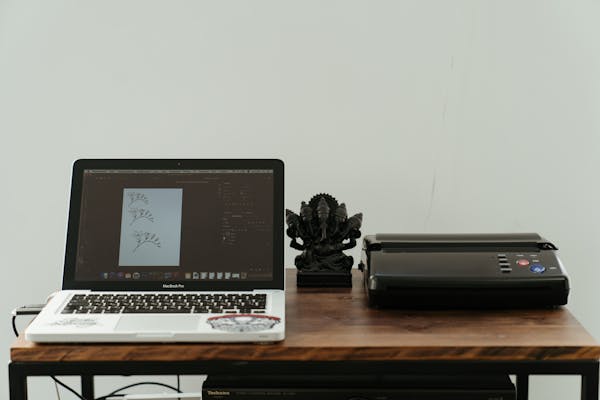Table of Contents
InvestorPlace – Stock Market News, Stock Advice & Trading Tips
June 18, 2021. The world’s largest automaker, Volkswagen, announces that they will start using a new 3D printing process to manufacture car components.
June 22, 2021. Regenerative medicine leader CollPlant Biotechnologies announces they will develop 3D bioprinted regenerative soft tissue for use in breast reconstruction procedures.
June 28, 2021. Swiss chemical giant Sika unveils its own concrete 3D printing system.
June 29, 2021. Racecar maker Rodin Cars announces they will be using 3D printing to produce parts for their upcoming Rodin FZero hypercar – a car designed to go faster than current Formula 1 racing cars.
All of that has happened – in the past two weeks alone.
Folks… the writing is on the wall… the 3D Printing Revolution has arrived!
For years, these printers were ridiculed for being slow, clunky, expensive, and ultimately, unnecessary. And with good reason. 3D printers used to be all of those things.
But not anymore.
Today, 3D printers are these highly complex and quite beautiful machines that can create 3D renderings of virtually any model, at any size, in any material, in record time, and at low prices.
They’re dream manufacturing devices. It took a while to get to this point. But we are finally here.
And, now, 3D printers are ready to disrupt how companies across the globe make things.
Make no mistake about it. 3D printers will be in factories everywhere by 2030, and many high-quality 3D printing stocks out there will soar 10X or more over the 2020s.
The time to invest in the 3D Printing Revolution is now.
But… to understand where the opportunities are in this market… we need to first understand the technology underlying 3D printing, or “additive manufacturing” (AM, for short), as it’s called by industry insiders.
The 3D printing process is actually quite complex. But, at a high-level, it works very much like the 2D printing process. It follows three very basic steps:
- Modeling. The first step of any 3D printing process is 3D modeling. You have to design your desired object in a 3D modeling software, usually some sort of computer-aided design (CAD) software. Engineers will use CAD software to design all the ins-and-outs of their desired object, including angles, geometries, and structures. At the end of the process, the engineer saves the CAD software design as a .stl file, or stereolithography file, which is native to CAD software and readable by 3D printers.
- Printing. Much like 2D printers, 3D printers print “layer-by-layer.” That is, your 2D printer zooms back and forth across a blank piece of paper, and shoots different colors of ink on the paper, line-by-line, until the image is fully printed. 3D printers work in the same fashion. They zoom back and forth across a foundational base, and shoot different materials (plastics, metals, etc), layer-by-layer, until the object is fully printed.
- Sintering. The final step in the 3D printing process is most usually a sintering process, wherein the object is heated and cooled rapidly to burn away trace amounts of binding material and solidify the object. This is most usually used in metal 3D printing processes, so as to form a sturdy metal end-product.
The upsides of this 3D printing process are two-fold – and each upside is theoretically enormous.
One of the big ideas, of course, is that because 3D printing is based on a software-driven model, it can be used to print anything – if you can model it on a computer, you can print it in a 3D printer. To that end, one enormous theoretical upside of 3D printing is to unlock a new era of precision manufacturing wherein we can create highly complex parts that we simply could not create before – think unique rocket engines for space travel.
The other big idea is that with 3D printing, you can consolidate, accelerate, and cheapen the manufacturing process. That is, in legacy machining and casting processes, making a highly complex “big part” often requires multiple sub-processes to create “small parts,” which are then slapped together to create the “big part.” Additive manufacturing can make all those parts in one step – in one “print” – so that making complex and multi-step parts is streamlined, accelerated, and made more cost-effective.
Those are the two enormous upsides of 3D printing – and that’s why many industry insiders are so bullish on the potential economic impact of additive manufacturing. If these machines work efficiently, they could entirely redefine the world’s supply chain.
Admittedly, that’s a big “if” … and there have been some major technological impasses which have stunted widespread adoption of 3D printing in recent years.
One is printing material. 3D printers have historically been limited to printing in plastics or powder materials. Plastic end-use parts aren’t very useful. You need these AM machines to print metal parts in order to be immensely useful.
Another is efficiency. Remember how old school 2D printers used to take forever to print a picture? Because the printer had to go over each layer of the image multiple times to make it “good.” The same is true for today’s 3D printers. They take forever to print, because in the layer-by-layer printing process, they need to go over each layer multiple times to make sure it is printed exactly as it was designed.
Another hinderance is the use of supports in 3D printing. 3D printing can be a pretty intense process. You have a big machine, moving rapidly back and forth, shooting powders/metals out of a pointer. Amid all that movement, the object being printed is subject to shaking. Not to mention, during the sintering process, metal objects being heated and cooled rapidly are subject to warping.
To avoid that shaking and/or warping from altering the object, 3D printers use supports to hold the object in place. Such supports prevent the production of parts with complex internal geometries, and therefore, limit the upside of the “if you can think it, you can print it” concept.
Thus… the key to kick-starting the 3D Printing Revolution… and unlocking the enormous potential of 3D printers wherein these machines are commonplace in every factory in the world… rests in creating cost- and time-effective metal 3D printers that are free of the constraints of supports.
That’s why, in the 3D Printing Revolution, I’m investing in the companies pioneering the novel technological breakthroughs underlying these future “dream 3D printers.”
As it turns out, the current titans of the 3D printing industry are not pioneering these next-gen breakthroughs.
Instead, these breakthroughs are coming from exciting new startups in this space…
Like a 3D printing company founded in 2015 by a bunch of MIT professors that has created a breakthrough printing technology which enables its printers to print metal objects, layer-by-layer, in just one pass – thereby creating a new class of hyper-efficient metal 3D printers.
Or another 3D printing company founded in 2014 that has figured out how to do support-free metal 3D printing and which is now using this breakthrough technology process to print rocket engines for SpaceX.
Both of those companies just recently came public.
Both of their stocks represent 10X investment opportunities over the next decade.
And the time to invest in these names is right now… while they’re still dramatically undervalued and being slept on by Wall Street.
Click here to sign up for my free e-letter, Hypergrowth Investing, and get my latest research report, 11 EV Stocks to Buy for 2021.
On the date of publication, Luke Lango did not have (either directly or indirectly) any positions in the securities mentioned in this article.
The post 2 Small 10X Investment Opportunities in the 3D Printing Revolution appeared first on InvestorPlace.
The views and opinions expressed herein are the views and opinions of the author and do not necessarily reflect those of Nasdaq, Inc.







